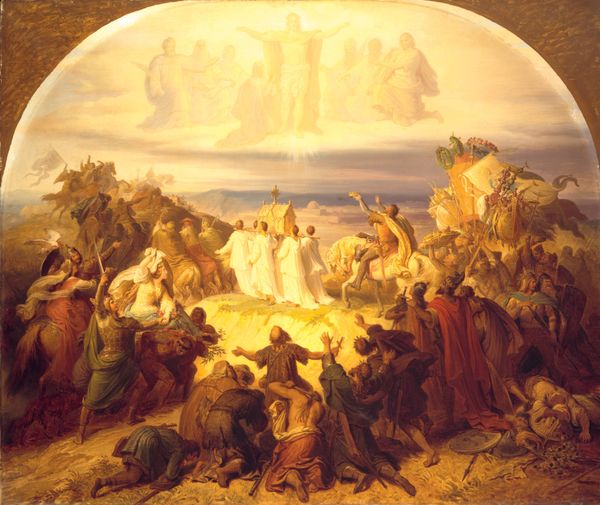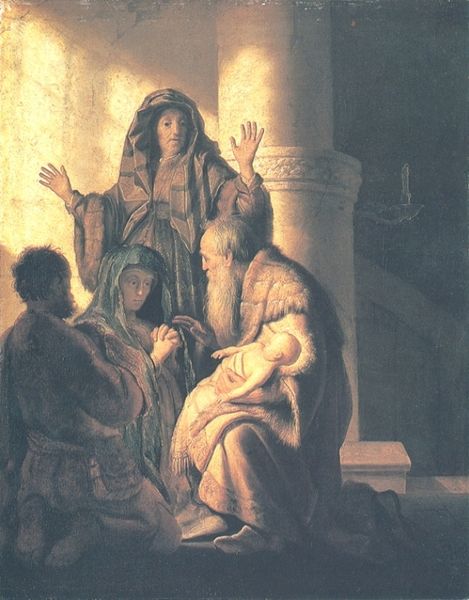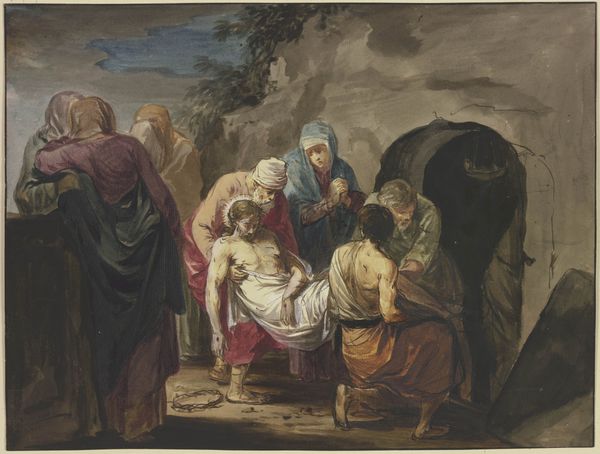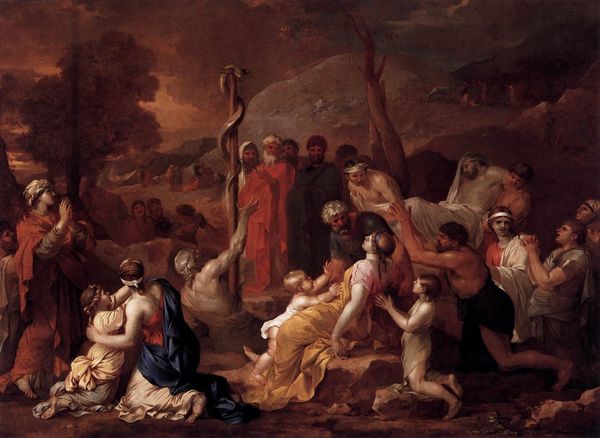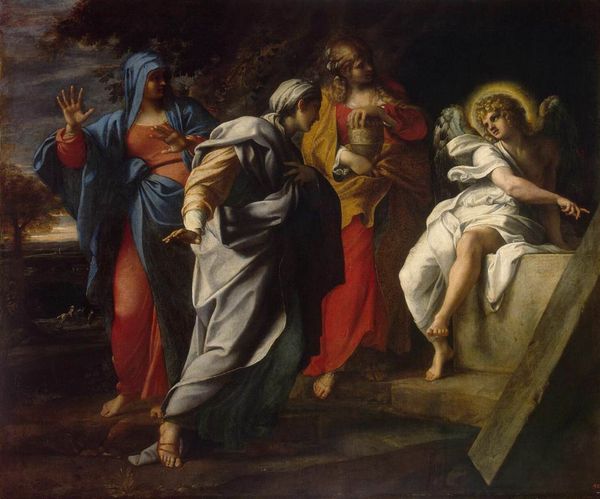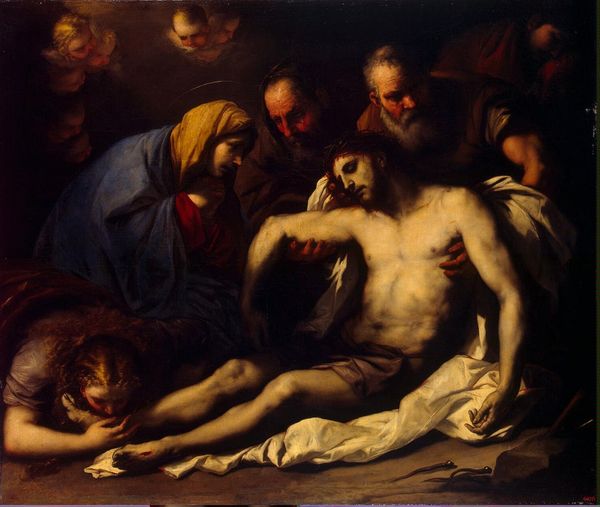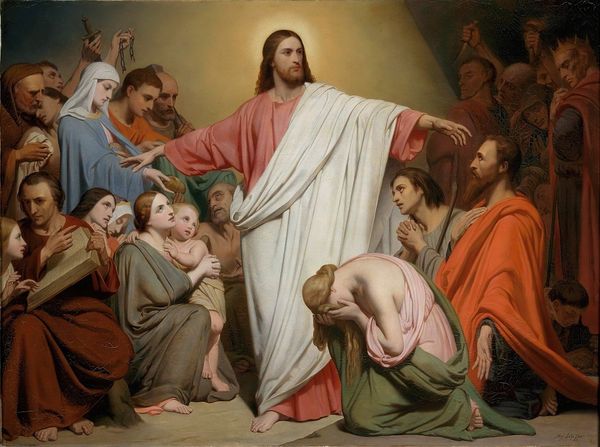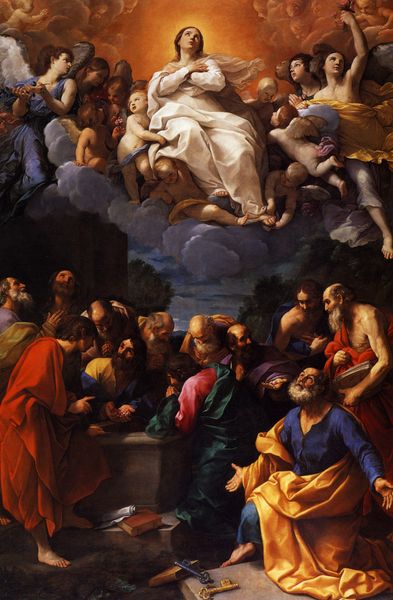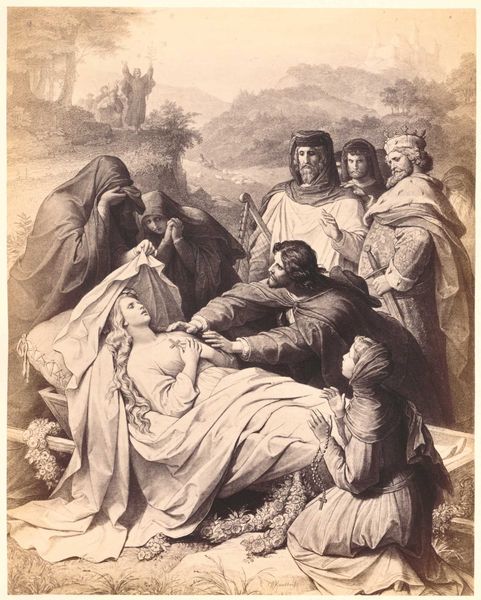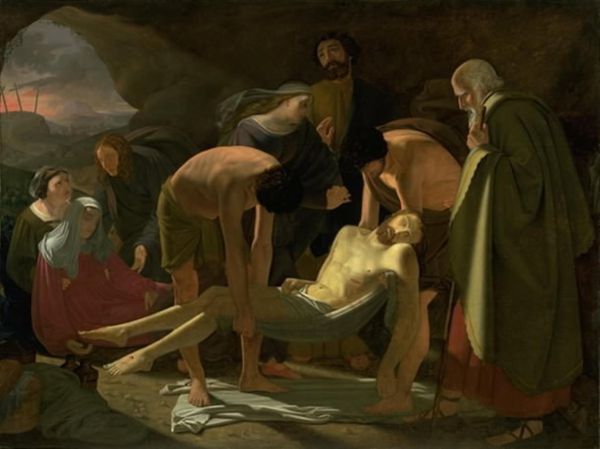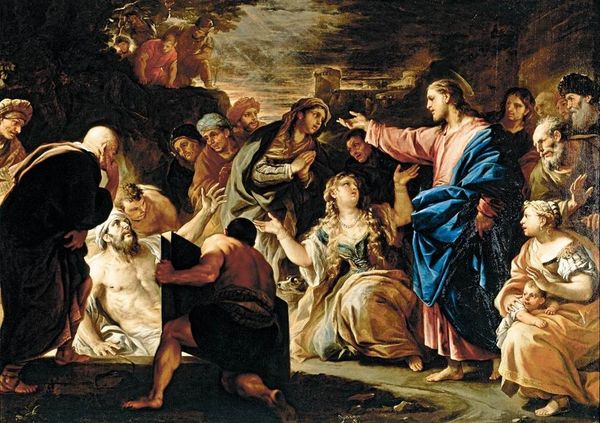
painting, oil-paint
#
portrait
#
allegories
#
neoclacissism
#
allegory
#
painting
#
death
#
oil-paint
#
landscape
#
figuration
#
history-painting
#
realism
Copyright: Public domain
Editor: Rembrandt Peale’s 1820 painting, "Court of Death," crafted with oil paint, really strikes me. It’s so theatrical and chilling. With that dark background and the distressed figures... What do you make of it? Curator: Well, this work emerges from a period when large-scale allegorical history painting was considered the apex of artistic achievement. The public role of art was to instruct, to elevate. Peale, steeped in Neoclassicism, seeks to offer a moral lesson. What socio-political forces do you think may have influenced the popularity of such grim themes? Editor: Perhaps the anxieties of a rapidly changing world, or the echoes of the recent Napoleonic wars? I mean, death as a subject has been handled many ways in art history, what is particularly telling about the social context around Peale’s interpretation of this topic? Curator: Exactly. The emphasis here is less on individual loss, and more on a universal reckoning. Notice how the figures, though distressed, are arranged almost like actors on a stage. It’s a highly constructed scene, meant for public consumption and moral contemplation. Is the composition convincing to you? Does this heighten, or diminish, the emotional impact? Editor: It definitely feels posed, like a tableau vivant. While the classical references are obvious and grand, it kind of detracts from genuine pathos, doesn't it? More performance than pain, maybe. Curator: That distance is partly intentional. Consider how museums shaped art viewing, inviting people to bear witness to great events from a safe distance. This wasn’t just a picture; it was a public spectacle, designed to provoke discussion and perhaps even shape social behaviour. Editor: So the 'realism' style isn’t so much about raw emotional authenticity as it is about accessibility, getting the public to engage with moral lessons? Curator: Precisely! And seeing that intention shifts our perspective. Thanks to Peale, we may see a broader message than at first glance. Editor: Definitely, understanding the public role of art really changes how I see this! Thanks for sharing that perspective!
Comments
No comments
Be the first to comment and join the conversation on the ultimate creative platform.

